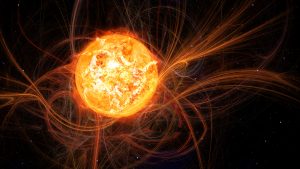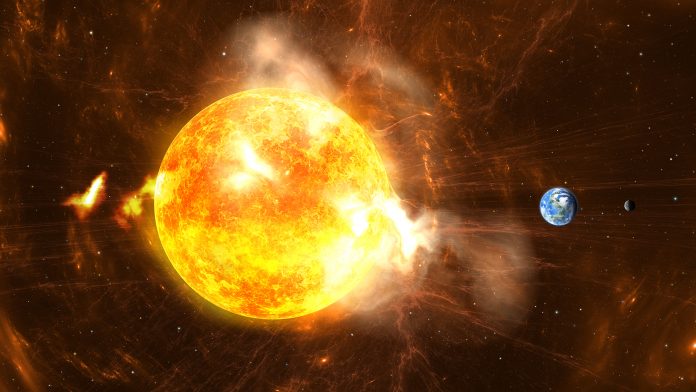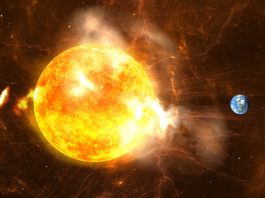For the first time, physicists have calculated a definitive measurement of the Sun’s electric field, providing insights into its effects on Earth.
The study, conducted by scientists at the University of Iowa, provides the first detailed measurement of the electric field of the Sun and how it interacts with the solar wind – charged particles that flow rapidly through space that potentially affect the Earth and its technologies such as telecommunications and satellites.
The enigmatic electric field
To conduct their investigation, the team employed the Parker Solar Probe to calculate the distribution of electrons within the Sun’s magnetic field. The Parker Solar Probe was situated within a staggering 0.1 astronomical units (AU), around nine million miles of the Sun, closer than any spacecraft has ever been before. By measuring the distribution of electrons, the researchers were able to determine the size, breadth, and scope of the electric field of the Sun more comprehensively than ever before.
Jasper Halekas, an associate professor in the Department of Physics and Astronomy at Iowa and the study’s corresponding author, said: ” The key point I would make is you can’t make these measurements far away from the Sun. You can only make them when you get close. It’s like trying to understand a waterfall by looking at the river a mile downstream. The measurements we made at 0.1 AU, we’re actually in the waterfall. The solar wind is still accelerating at that point. It’s really just an awesome environment to be in.”

The Sun’s electric field is created through the interactions of protons and electrons that are produced when hydrogen atoms are stripped apart due to the substantial heat generated by fusion deep within the star. Here, electrons, which have masses 1,800 times less than protons, are blown outward as they are less constrained by gravity than the heavier protons. Nevertheless, due to their positive charge, protons display some control, reining in some electrons due to the familiar attraction forces of oppositely charged particles.
Halekas said: “Electrons are trying to escape, but protons are trying to pull them back. And that is the electric field. If there were no electric field, all the electrons would rush away and be gone. But the electric field keeps it all together as one homogenous flow.”
For example, envisage that the electric field of the Sun is a gigantic bowl, and the electrons are marbles rolling up the sides at varying speeds. Some of the electrons are fast enough to cross over the lip of the bowl, whereas others do not accelerate enough and, therefore, will roll back the base of the bowl.
“We are measuring the ones that come back and not the ones that don’t come back,” Halekas said. “There’s basically a boundary in energy there between the ones that escape the bowl and the ones that don’t, which can be measured. Since we’re close enough to the Sun, we can make accurate measurements of electrons’ distribution before collisions occur further out that distort the boundary and obscure the imprint of the electric field.”
Uncovering solar wind
Obtaining these groundbreaking measurements will enable physicists worldwide to learn more about the solar wind – a jet of plasma exerted by the Sun that travels at one million miles per hour that washes over Earth and other planets in the solar system. The researchers identified that the Sun’s electric field holds some influence over the solar wind, although not as much as was initially hypothesised.
Halekas commented: “We can now put a number on how much of the acceleration is provided by the Sun’s electric field. It looks like it’s a small part of the total. It’s not the main thing that gives the solar wind its kick. That then points to other mechanisms that might be giving the solar wind most of its kick.”









